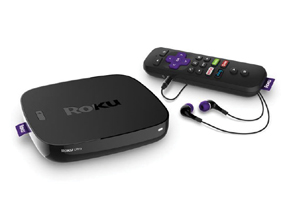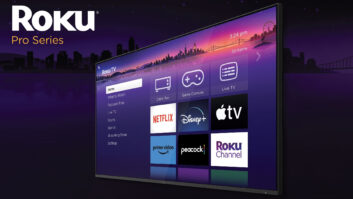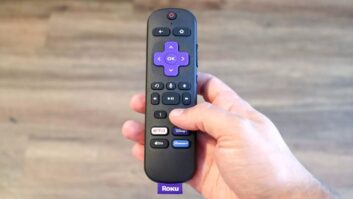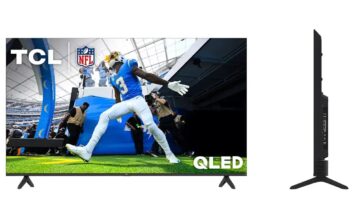
When the Netflix Player by Roku was first introduced back in 2008 it may have been hard to foresee that would lead not just to what has become a commonplace way for viewers to access literally thousands of “channels” and their multiple program feeds, but to a broad-based product line that was instrumental in creating a new product category.
Over the years that one single-purpose product has grown to a line of models that have a leading market share in that category. Collectively, Roku devices streamed over 4 billion hours of video content in the first half of 2016 from more than 3,500 content channels.
While Roku technology is now built into six TV brands and more than 100 models, the vast majority of their sales have been in the ubiquitous “hockey puck” streamers and Streaming Stick dongles. While the 4K-capable Roku 4 was introduced about a year ago, followed by an updated Streaming Stick in April, the heart of the Roku line has not been refreshed for some time.
That all changes today with the introduction of five new models, leaving the Streaming Stick as the only carryover model.
While the basic functionality remains the same, and there is not as major an update to the underlying Roku OS that we had at the release of the Roku 4, there are some significant advances with the new models. Overall, they are all smaller, some by up to 75 percent, and more powerful. From a marketing perspective the use of numbers to designate the various products has been replaced with names, enabling consumers to more easily tell them apart.
Replacing the entry level Roku 1 and Roku 2 will be two new Express series models. Both abandon the somewhat square, rounded edge “hockey puck” look long associated with this type of product for a smaller, compact, rectangular shape. Both have Wi-Fi b/g/n, and include an HDMI cable as well as an IR remote with direct access buttons for popular streaming services. The Express+ model adds a composite video/L+R analog audio for connections to older analog TVs.
The biggest game changer, however, is not the form factor or features, but the pricing. At $30, twenty bucks below both the current Roku 1, the Roku Express is priced dramatically below competitive products. This throws down the gauntlet by setting a new benchmark for affordability in this category that could further increase cord-cutting and the adoption of streaming services. For those who need analog A/V connection cables, the Express+ will retail for the same $40 as the Amazon Fire TV Stick. Roku’s own Steaming Stick, introduced back in April, remains unchanged at $49.
Related:Roku’s New Streaming Stick Is Slimmer & Faster Than Ever
Also setting new ground for features and pricing will be two new Premiere models. Replacing the current Roku 2 at $69, the Premiere model is the lowest-priced full 4K/UHD streamer with HDMI 2.0/HDCP 2.2 so far. This is close to half the price of the current 4K-capable Roku 4, and in addition to 4K/UHD playback it features a quad-core processor and 802.11ac MIMO wireless. Given the 4K capability, it too sets a new low-price benchmark.
The step up Premiere+ carries the same $99 price as the current Roku 3, but in addition to the 4K and quad-core processor in the lower-priced Premiere model it adds this season’s most important step-up feature: HDR-10 capability. Carried over from the Roku 3 feature list is Ethernet connectivity, an SD card slot and “point anywhere” Wi-Fi Direct remote with headphone jack.
At the top of the line is the Roku Ultra, replacing the Roku 4. Along with the same $129 price it adds HDR to the feature set of Roku’s first 4K/UHD model. It keeps the optical digital audio output, the RF remote with headphone jack, and a wireless remote with voice control, a USB port for media playback and a “remote finder” feature. Thanks to an improved mechanical design the occasionally noisy fan that bothered some owners of the Roku 4 is gone.
While the proliferation of connected Smart TV models may seem to lessen the need for products such as Roku, it is important to note that no streaming device or built-in feature set includes every service. However, thanks to the absence of an ownership alliance to a specific content service, Roku is generally regarded as having the broadest and among the most comprehensive range of service providers. Smart TV is also not an impediment to Roku’ s business model. According to Lloyd Clarke, Roku’s product management director, the six bands and over one hundred models of Smart TVs use Roku technology as their interface and they have captured 12 percent of the Smart TV market.
The three new Roku models with 4K, and particularly those with HDR, are perhaps even more important for the custom market given its dependence on projectors. Projectors, particularly the new models with HDR that were introduced earlier this month at CEDIA, typically do not include “Smart TV” services. Thus, these new Roku models, which for the most part are unique in the market at this time, are almost a “must have” for projectors.
Available for pre-order today, and available on Oct. 9, all models except for the Express+ will be available through Amazon, Best Buy and Walmart, among others. The Express+ with its legacy connection capability will be a Walmart exclusive.
With intense discussions now underway at the FCC as to the long-term place of set-top devices not provided by cable and satellite providers, streamers such as these new models from Roku may well be in the vanguard of a number of new products that will step up the game in this category. Google is rumored to be introducing a new 4K-capable Chromecast next week and Amazon is unlikely to be left behind with its Fire TV line.
Then there is Apple, whose AppleTV Gen. 4 surprised many with its omission of both 4K and far-field voice control. Although Apple just made major new product introductions for iPhone and Apple Watch, it is not at all out of the question for them to announce a new AppleTV before the end of the year with 4K. Apple is famously secretive about new products, but we may also see functionality that will compete with the likes of Amazon’s Echo and Dot and the forthcoming Google Home. According to data from comScore provided by Roku, AppleTV’s 12 percent market share ranks fourth behind Roku with 49 percent, and trailing Chromecast with 22 percent and Amazon Fire TV with a 16 percent share. Apple is also not known for taking a back seat to competitors, so anything is possible to regain market leadership. This is all worth watching, and of course we will be doing that for you starting with Google’s announcements on Oct. 4.
Roku’s new model line clearly sets the standard for features and pricing in streaming products with these announcements. Where will the market take us beyond these? Stay tuned. As it is going to be an interesting ride.













